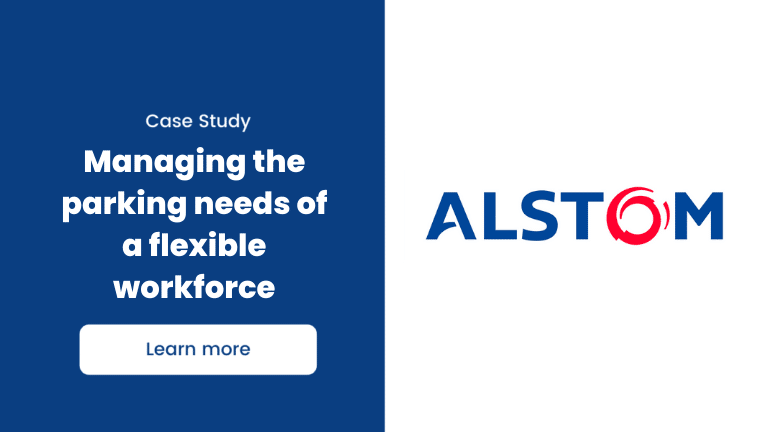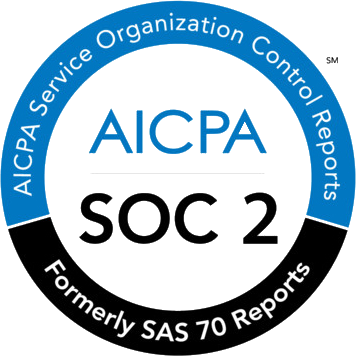Choosing the right employee parking policy for your business can be stressful. Parking impacts almost everyone in the business from top to bottom. There are very few issues which are so emotive at the office. Here’s a quick guide to the 6 most popular types of workplace parking policy to ensure you choose the right one.
Before we jump in check out this super simple explainer video about how parking management software can help you streamline parking management at your business.
Table of Contents
Toggle1. First come, first served
This policy leaves workplace parking as a free for all. Whoever is in first gets the available space.
This approach has become popular with companies who want to be fair to all employees. These companies are looking to move away from hierarchical parking structures. They perceive first come, first serve to be the fairest solution.
“This policy works for companies with a large supply of parking spaces which very rarely fill up.”
However, employers operating first come, first serve often report tensions emerging among staff. Issues tend to emerge if there aren’t enough parking spaces. While it might seem a fair solution, if you scratch a little below the surface you’ll see where the problems come from.
Getting to work ahead of the rush is easy for the young professional. Many of whom may live close to the office and could cycle or walk. For other employees with young families early mornings can be hectic. Getting kids ready for school and school runs all detract from a parent’s ability to get into the office ahead of the rush.
A first come, first serve approach will also lead to the largest amount of car usage and congestion. With employees always in with a chance of getting parking at the office, many will take the car as default. On busy days this can lead to large traffic jams as staff look to enter and exit the car parks.
Companies are moving away from this approach to a flexible parking policy since the COVID-19 pandemic struck. Employee confidence in communal transport (carpooling and public transport) has plummeted. Although fewer people are travelling to offices, many of whom, demand certainty around parking.
Looking to learn more about the world of first come, first served parking, check out this expert blog – A guide to first come first served parking at your workplace.
2. Designated spaces
We’ve all driven into workplaces with “reserved” signs littered across the car park. This model gives employees designated set space for use.
Many companies with a lack of space will use this model to ensure key staff can get to work easily. Companies use many different criteria to allocate spaces including:
- Seniority
- Distance to travel
- Unique needs (expecting mothers, differently abled)
- Length of tenure
- Carpoolers
- EV users
“The designated space approach worked quite well in certain settings particularly smaller offices. COVID-19 has all but made it defunct.”
The success of working from home is leading experts to agree that offices will never be the same again. Gone are the days of all staff working from the office 5 days a week. Now we can expect staff to work from the office a few days a week and from home for the rest.
What happens to fixed parking spaces when staff are only working from the office a few days a week? Surely companies aren’t going to waste money on spaces which lie empty for over half of the week?
3. Mixed approach
This was the most popular approach for medium to larger companies in a pre-COVID world. A mixed parking policy saw a certain amount of space designated to key employees. This approach meant all remaining space was simply, first come, first serve for the remaining staff hoping to obtain a space.
“While a mixed parking policy had a lot of advantages in the past, changes to working styles and commuter preferences since the outbreak of COVID-19 is seeing this approach declining in popularity.”
4. Flexible approach
The massive winner from the COVID fallout is the flexible parking approach.
Traditionally, the flexible approach consisted of a business trying to run their car park through Excel or WhatsApp. People shared when they needed a space and when they didn’t need a space. While the intention was good, things had the potential to get messy, and fast!

Nowadays, companies use employee parking management software like Wayleadr.com. These software solutions monitor who needs parking and when, and automatically allocate the space.
The beauty is that the technology can now bring together the best bits of workplace parking policy in a fully automated approach. Parking spaces can be designated to certain staff. If they are not being used, they are automatically redistributed to other staff based on the criteria which matters most to your business.
Certain zones can be designated as paid zones or first come, first serve. While real-time data can be garnered to allow companies to decide whether or not they can reduce car park size and unlock real estate savings.
“The flexible approach is proving a key tenet of the return to office process for many employers.”
Want to learn more about what flexible parking can add to your workplace? Check out this insightful blog – The ultimate guide to flexible parking for business.
5. Employee parking credit
Also known as employee parking cash-out. This approach is gaining popularity as companies look to incentivize less driving. Employers are starting to realize in some cases it’s cheaper to pay people not to drive than pay for parking.
Employees are given a monthly parking allowance and are allowed to keep anything they don’t spend. This works well for companies with off-site partnerships. These are agreements where staff park in paid car parks at the expense of the employer.
“This approach can also benefit companies with paid on-site employee parking.”
Wondering how to roll-out an employee cash out scheme at your office? Check out this blog – How to roll-out a parking cash out scheme at your office?
6. Paid employee parking
The fastest growing option pre-COVID and definitely going to be the most common approach in teh long-term. Paid employee parking is what it says on the tin. Employees pay to park at work.
For many employees this might sound a little draconian. Nevertheless, the environment and not profit, will drive this change. In fact, according to EU research, charging employees to park at work is the most effective means to reduce car dependency.
“This will be part of a wider move in making e-bikes, cycling and public transport more attractive options to commuters.”
Early iterations of paid parking programs see staff designated a set number of days per month where they can park for free. If they need additional parking, they pay for the privilege.
Revamp your employee parking operations
Find out how Wayleadr can help you manage employee parking and reduce parking-related issues
Get a DemoMost people realize that parking will have a role for most companies in the medium and long-term. It’s going to be different though. Leaving the car at home will be the new normal and driving to work will be the exception.
Paid employee parking has a key role to play in driving this behavioural change. Wondering whether paid options are right for your workplace, have a read of this blog – Should you introduce paid parking at the office?
Parking causing issues? Join industry leaders from companies like Sanofi, Indeed.com & CBRE, schedule a demo with Wayleadr.com today and solve your parking problems in the click of a button.





